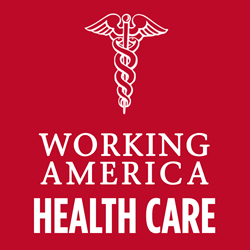
BY SARAH KLIFF
We are now 33 hours into Obamacare's insurance expansion, which began at midnight on Jan. 1. And it is, alas, far too early to tell if the nation's new health-care law is working. We know that no "death panels" have materialized but, aside from that, have very, very little information about how the Affordable Care Act's newly insured are changing our health-care system.
It is not too early though to think a bit about what "working" actually means. There are a handful of ways that we tend to measure the success of health insurance expansions in the United States. The Affordable Care Act is no exception here; it's a complex law where there are at least four policy outcomes that all count as some definition of "working."
Do more people have health insurance? One key goal of the health law was to reduce the uninsured rate by making it easier for the 48 million Americans without insurance coverage to get it. The Congressional Budget Office projects that about 30 million people will gain coverage over the next decade, compared to a scenario where the Affordable Care Act had never passed. That will be one yardstick by which to tell if the health-care law is working: Whether more people have coverage.
This is actually difficult to measure, at least in the short-term, because there's no national clearinghouse of people who do or don't have insurance. The combination of insurance cancellations and exchange sign-ups actually make it really hard to know, at this very moment, whether the health law has lead to a net gain in coverage. The Census Bureau does do annual surveys on insured rates, but those come out on a bit of a delay. The federal agency won't publish data on 2014, for example, until the fall of 2015.
Do Americans have better access to health care? Insurance cards, on their own, are not very much fun. In fact, they're probably among the more boring pieces of plastic you own. Nobody pays hundreds of dollars each year in premiums to get a small plastic card -- they do it for the access that card gives to insurance coverage. So another metric to measure the Affordable Care Act is whether Americans have an easier time seeing the doctor, for example, or meeting their medical needs without financial hardship.
This is true both for those gaining coverage under the health law -- and those who already have it. One metric researchers were really interested in in Massachusetts -- and will likely follow here -- is what happened to everyone else who already had coverage, when many more people gained access. They can look at this by researching wait times to see doctors and surveying the general population about whether they can afford the care they need more easily. A much-watched study of Oregon's Medicaid expansion -- where coverage was assigned randomly, by lottery -- was one example where researchers did show a reduction in financial hardships when Oregonians enrolled in the public program.
Are Americans getting healthier? The whole idea of health insurance -- as the name pretty bluntly implies -- is improving health. That's why this is another metric that will likely be tracked with the Affordable Care Act, whether the insurance expansion is making the population healthier.
Proving a link between health insurance coverage and health status improvement can actually be challenging. Trips to the doctor are, obviously, only one factor among dozens that contribute to an individual's physical well-being. That same study of the Oregon Medicaid expansion showed a 30 percent reduction in depression rates, but found no short-term impact on physical health measures, such as cholesterol and blood pressure.
Is health care becoming more affordable? The president regularly talks about the health-care law as both an expansion of insurance coverage and an attempt to control health-care costs -- there's a reason, after all, the word "affordable" turned up in the law's name. The health-care law contains dozens of experiments, mostly in Medicare, meant to encourage lower spending on health care without cutting into quality. The Obama administration is also optimistic that the new insurance exchanges will drive down the cost of premiums, by putting all insurers into a regulated marketplace.
There are a few ways to measure affordability, one being the country's overall tab for health spending, and watching how quickly -- or slowly -- it grows. (Right now, health-care costs growth is at a historic low -- but it's unclear how much that has to do with the health-care law). You can also survey Americans directly, about whether they feel it's easier to afford health care. Perhaps surprisingly, these two metrics don't always add up: Even with health costs growth slowing dramatically. public survey research shows Americans feel even more pinched when it comes to their health bills.

No comments:
Post a Comment